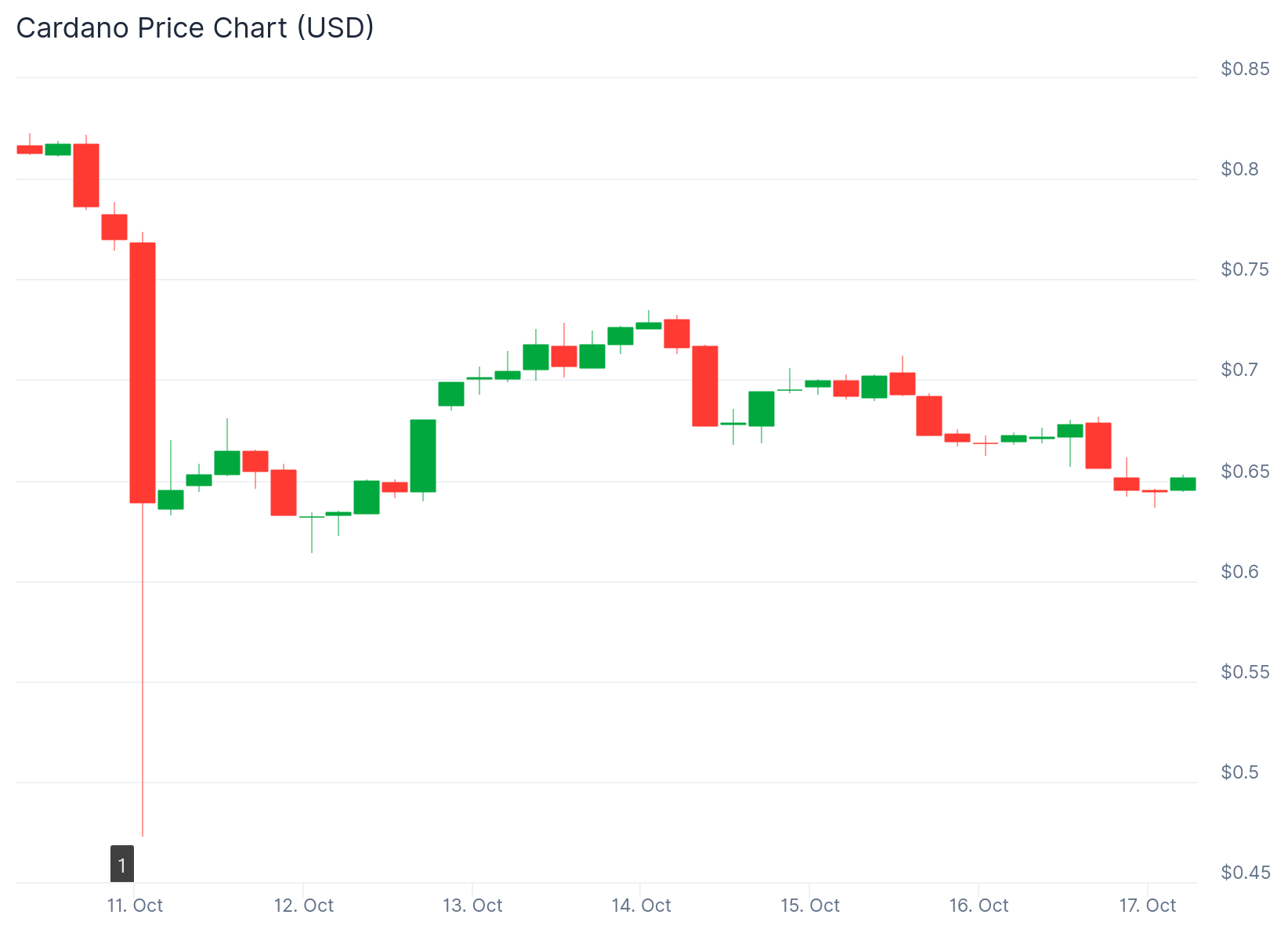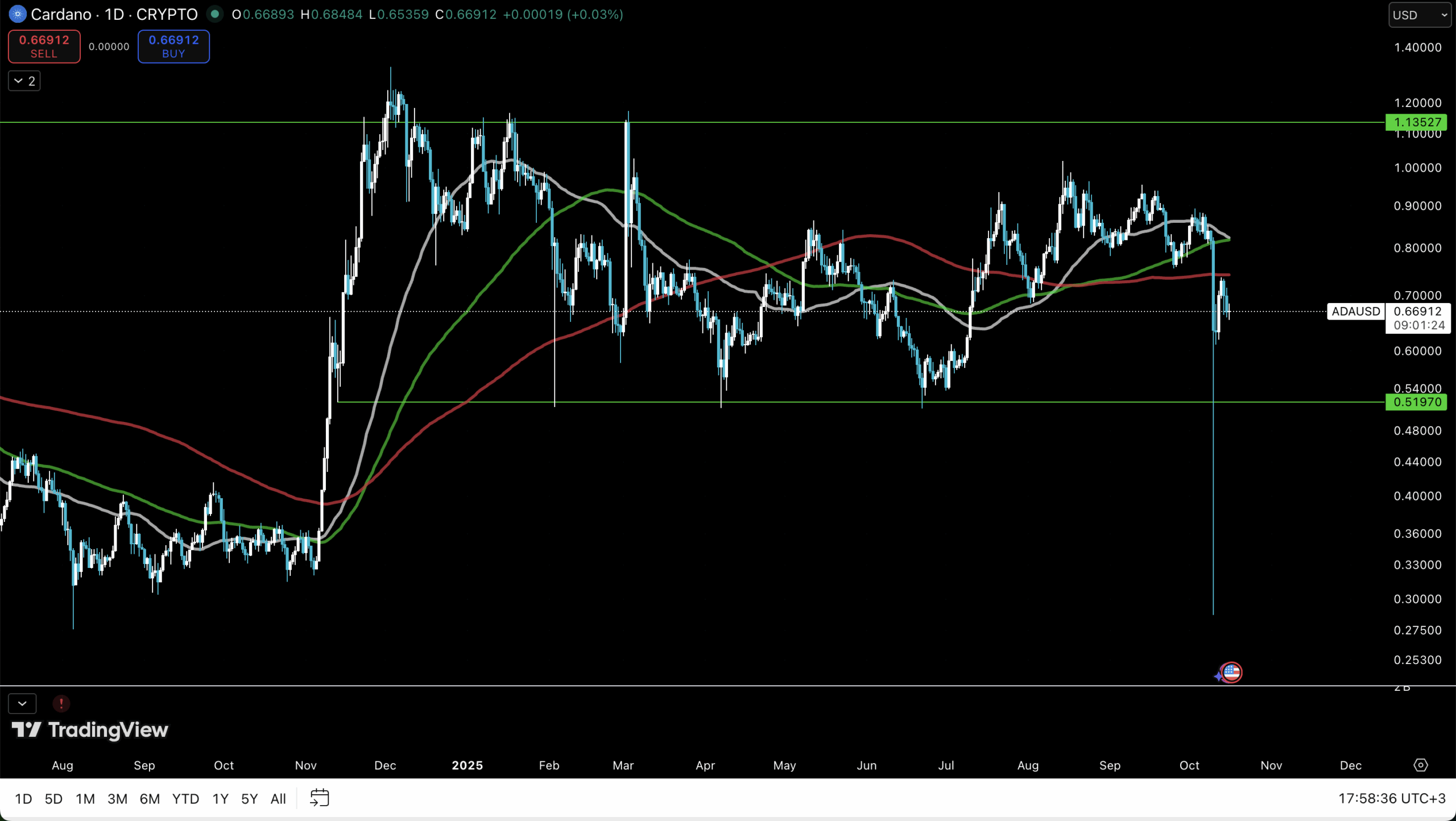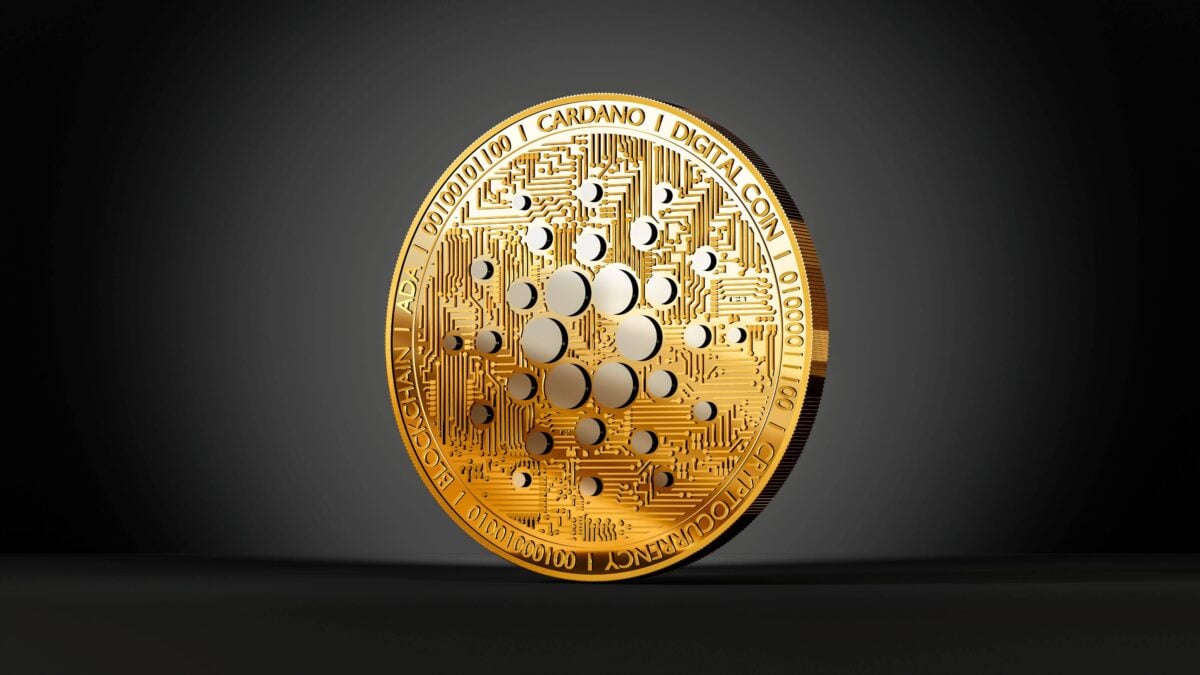TLDR
- Cardano’s community treasury has crossed 1.6 billion ADA tokens, valued near $1 billion, providing development funding without venture capital
- The treasury grows through transaction fees and staking rewards, with community governance controlling how funds are allocated to projects
- ADA price currently trades around $0.67, down 3.5% in 24 hours, 18% weekly, and 22% monthly from its $3.10 all-time high
- The network uses Project Catalyst for governance, allowing token holders to propose and vote on funding allocations
- Technical analysis shows ADA ranging for a year, trading below key moving averages with support at $0.63 and resistance at $1.13
Cardano’s community treasury has reached a value near $1 billion after crossing 1.6 billion ADA tokens. The milestone shows the network can fund development without outside investors.
REMINDER: Cardano’s community-managed treasury still holds over 1.6 billion $ADA. pic.twitter.com/W6Zj1BRbLH
— TapTools (@TapTools) October 15, 2025
At the time of writing, Cardano price was around $0.67. The coin dropped about 3.5% over the past 24 hours. Weekly losses reached 18%, while monthly declines stood at 22%.

The treasury balance grew through protocol mechanics. Each block produced rewards that split across stake pools, delegators, and the treasury. Transaction fees also contributed to the pool.
The network did not depend on venture capital. It relied on use-driven cash flow from its own operations. On-chain metrics supported this approach as the treasury trended higher with continued activity.
Community governance controls the war chest. Token holders propose, debate, and vote on allocations. The system uses Project Catalyst to collect proposals and select winners.
The process gives smaller teams access to resources. It also creates a public record of outcomes and milestones. Successful proposals turn treasury assets into shipped products.
Treasury Growth Model
Funds accumulated through fees and staking rewards that already existed within the tokenomics schedule. The approach avoided extra supply pressure tied to fundraising. Lower issuance pressure helped tokens defend prior price ranges.
The treasury received its share of rewards and then faced review through proposals. Governance routed funds toward ecosystem needs. Community votes funded research, tooling, wallets, education, and early-stage apps.
An active unspent transaction output set indicated participation. In UTXO systems, each spend created new outputs. A large active set suggested many addresses moved or held ADA.
Fees remained modest at the user level but compounded at scale. During periods of heavier use, fees rose and boosted the treasury more quickly. That link tied network demand to future development capacity.
Technical Analysis
The monthly chart showed the last candle keeping its body above the 50-period moving average. A key resistance level sits at $1.13, which previously acted as support. The previous all-time high stood near $3.10.

The daily chart showed ranging for almost one year. ADA traded beneath all moving averages at this point. A long wick down appeared from last week’s liquidation cascade.
The 4-hour timeframe showed a support level forming at $0.63. The coin fell below all moving averages before the recent drop. Traders watched whether support would hold or if a retest of $0.52 would occur.
Against Bitcoin, ADA sat at range lows. The ADA/BTC pair showed potential for movement toward the top of its range. Historical patterns from 2018 and 2021 suggested similar runs could develop.
Cardano used proof-of-stake with stake pools that validated blocks and earned rewards. Delegators assigned ADA to pools and shared in rewards. That flow distributed incentives across the ecosystem.
The network’s fully diluted valuation stood at $30 billion. Total supply reached 45 billion tokens with 36 billion currently in circulation. Current trading kept ADA well below its previous highs.





